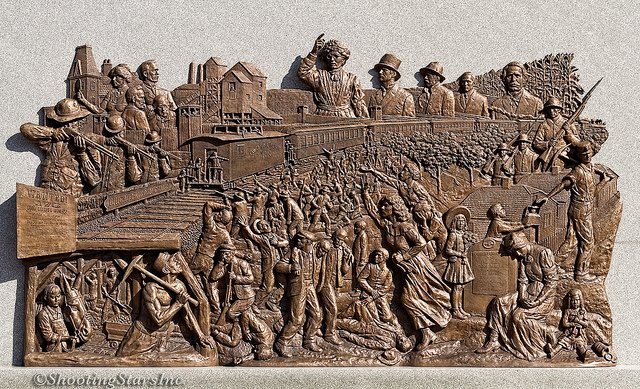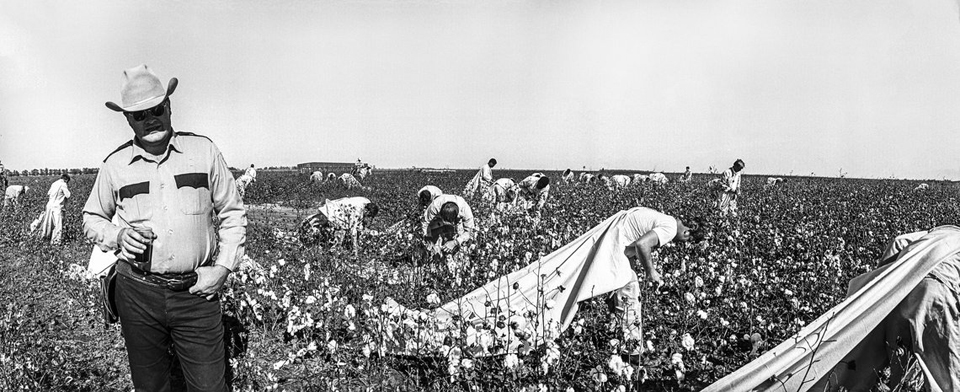
This Day in Labor History: October 18, 1981. Workers at Brown and Sharpe, one of the nation’s largest machine tool companies, went on strike at its plant in North Kingstown, Rhode Island. This strike continued for...15 years! Let's talk about the longest strike in US history! 

Brown and Sharpe was founded in 1833 a couple of miles from where I currently live in Providence, Rhode Island.
Over the decades, it became a large manufacturing firm making all sorts of goods in its large Rhode Island factories, helping to make the state one of the nation’s centers of American manufacturing.
By 1964, focusing on making precise measurement machinery, the company moved out of Providence to a huge new suburban plant in North Kingstown.
Like the rest of industry, Brown and Sharpe employed fewer workers by the 1970s. It also sought to reduce the power of its unions that had been established in the 1930s. During World War II, the company employed about 11,000 workers, but by 1976, it was slightly over 3,000.
About half of these were union members, affiliated with the International Association of Machinists (IAM).
The company claimed sympathy with the increasing precarity of industrial work in this nation but of course wasn’t going to let that get in the way of increasing employer power.
In 1981, the company demanded that employees give up the right to stay on a particular job, wanting to be able to switch workers to various jobs at will.
Not only was this insulting, but the IAM believed it would undermine seniority rights, one of the core principles of unionism. So they walked off the job.
Rhode Island is a pretty poor state, at least compared to its neighbors. It was always an industrial state, but that industrialization was much harder to maintain by the 1980s, as companies began shutting operations, automating, and moving overseas.
This just devastated Rhode Island. The Brown and Sharpe strike thus became a symbol of Rhode Island’s future. Would it be one where industrial work existed at all? One where workers would share in the benefits of their labor?
The strike quickly became bitter. From the first days, strikers were confronting Brown and Sharpe’s president outside his Providence home and throwing rocks at him, leading to a police escort. A striker was shot while warming his hands over a fire.
Another died after spending six hours on a picket line in subfreezing temperatures. Cops used pepper gas to disperse strikers on at least one occasion.
And that went to a new level in March 1982, when police fired tear gas on the strikers, creating outrage around the nation. Governor Joseph Garrahy apologized for the actions of the state police, but it really didn’t change anything.
Basically, what happened is that Brown and Sharpe replaced the workers, which they did very quickly and in fact eventually hired about half the original workforce back as desperation took hold.
About a year in, the IAM began distancing itself from an unwinnable strike and cut off strike benefits, but some of the workers just continued to hold on.
A big part of the reason that the strike could continue for so long is that Rhode Island was one of the few states in the country that provided strikers unemployment compensation, which should be a federal law.
Really, this would be a great labor law reform.
Really, this would be a great labor law reform.
As early as 1983, Peter Delisi of the state Labor Department said, “I wouldn’t be surprised to see it go for five years,” which was evidently a consensus at the time.
On the first anniversary of the strike, Rhode Island AFL-CIO President Edward J. McElroy Jr. declared...
“I’m telling you — and I swear it — that that strike will never go away. We intend to keep (the state business leaders’) feet to the fire on this issue for as long as God gives us the strength to do so and as long as we’re on the face of this earth.”
These strikes are always brutal on families. Robert Vivier was a steel cutoff operator for 10 years. He said, “I’m on welfare and working for my money doing maintenance work through a job-training program.”
In 1981, Vivier’s weekly take-home pay was about $300. It went to 1/3 of that amount, plus food stamps. This is the sort of thing that causes families to divorce, leads to higher levels of alcoholism and domestic violence. We romanticize strikes but we should not.
No one wants to be on strike, at least after the first week or so. Strikes are a moment of worker power, as I have described many times, but the actual process of striking moves from empowering to depressing very quickly. It’s a tactic that can work or can fail miserably.
In this case, workers did what they thought was right, but in an era when union-busting became national policy and private companies sought to eliminate unions entirely, but the odds were highly against them.
Most of the workers eventually moved on to other work, but the last holdouts retained a legal strategy, suing the company for illegally forcing them on strike, which a federal judge early in the process had ruled was something the union could sue over.
It was not until 1998 that the Rhode Island Supreme Court ruled for Brown and Sharpe that the strike ended.
Crazy story, but one that tells us a lot about deindustrialization and the indifference to workers from both parties in the 1980s and 1990s.
Back tomorrow to discuss the creation of the CIO after John L. Lewis punched Carpenters president Big Bill Hutcheson on the floor of the AFL convention.
In a sign of how little known this strike is, the 3rd hit on Google for it is my blog post where this originates. Lots of strikes need more attention!
• • •
Missing some Tweet in this thread? You can try to
force a refresh








